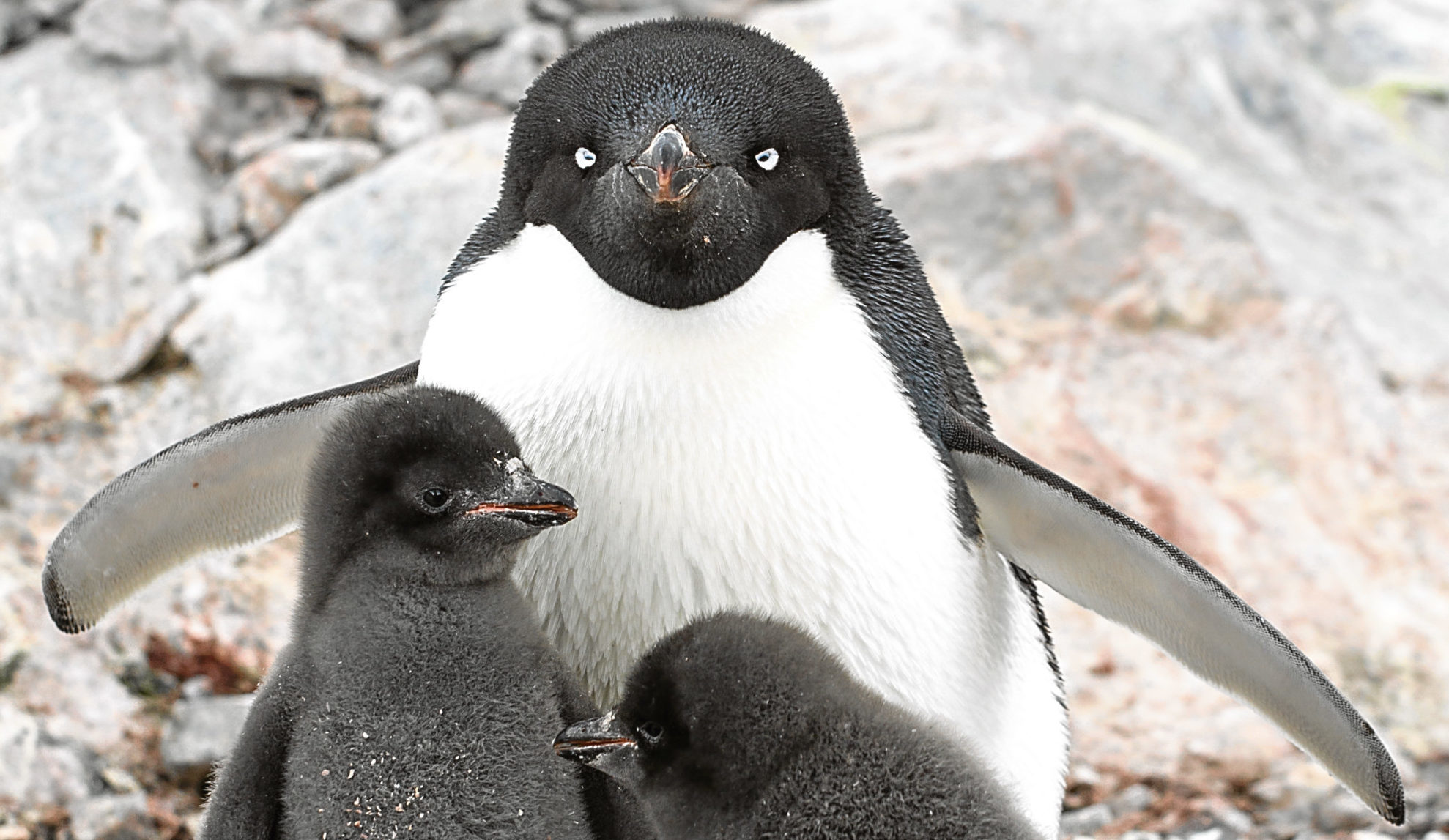
CLIMATE change and rising ocean temperatures have impacted thousands of species worldwide, causing populations to dwindle at an alarming rate, especially in the polar regions.
But a glimmer of hope appeared earlier this year when scientists identified a new super colony of penguins in Antarctica.
Detected via satellite, the population of Adelie penguins is thriving on the largely inaccessible Danger Islands.
Kevin Morgan, a naturalist for G Adventures, who operates expedition cruises to the region, explains: “In recent years, Adelie penguin numbers have been declining in the northwest sector of the Antarctic Peninsula, while the number of Gentoo penguins has been on the rise.
“The main reason for this is climate change, which is causing the sea ice to clear much earlier each year.
“Penguins travel to reach their colonies in order to mate and, while the Gentoos are adapted to cross the sea, Adelies prefer to use sea ice, which is proving more and more challenging.
“The decline in Adelie penguins in this region has led to increased concerns amongst conservationists and naturalists — which is why the recent discovery of the ‘super colony’ on Danger Islands was so significant.
“It is estimated to host 751,527 pairs of Adelie penguins (over 1.5 million breeding adults), which is more than all the other Adelie penguin colonies in the ‘upper’ Peninsula combined.
“And with two young hatchlings per pair, the Danger Islands colony could reach the three million mark.”
So, how has this massive population remained undiscovered until now?
“Danger Islands are located at the very tip of the Antarctic Peninsula,” says Kevin. “The position, just in the Weddell Sea, makes it very difficult to access due to the icebergs and sea ice that drift past with the currents.
“The ice also means the island is an ideal location for a colony of this size. It’s simply down to the inaccessibility that it hasn’t been discovered sooner.
“The chance that other ‘super colonies’ are still out there to be discovered is entirely plausible.”
What does this mean for global Adelie numbers?
“It’s complicated,” explains Kevin. “Adelies are in decline in the northwest Antarctic Peninsula, but rookeries such as Brown Bluff at the very tip of the Antarctic Peninsula and Paulet Island in the Weddell Sea are doing well.
“Numbers are healthy in the South Orkneys, which are further north, but surrounded by ice in the early part of the season. Further south, towards the Antarctic Circle, numbers are also good.
“All of these locations have lots of sea ice in the early part of the season, making them ideal for Adelie colonies.
“Climate change is happening, and penguin colonies are changing, as shown by the southern expansion of the Gentoo,” adds Kevin.
“Crucially, the vast areas of potentially suitable habitat in the Peninsula region, and elsewhere in Antarctica, play a huge role in the future of penguin numbers.
“This habitat provides penguins with the option to move around and have a better chance at adapting to changes in their environment.
“Globally, we need to work hard to move away from fossil fuels and our throwaway society, to try to reduce the amount of climate change.
“With glaciers in drastic retreat and ice caps reducing, we could see the polar regions — and the rest of the world in turn — really suffering.
“What encourages me is nature’s ability to bounce back, if given the chance. Look at the great whales and peregrine falcons. Due to conservation efforts, they have been brought back from the brink of extinction.
“We all need to work hard at protecting our wildlife. If we get it wrong, or don’t do enough, the melting glaciers and icecaps in the poles will have a dramatic impact.”
G Adventures run expedition cruises to the Antarctic Peninsula from £3,899pp. Visit www.gadventures.co.uk

Enjoy the convenience of having The Sunday Post delivered as a digital ePaper straight to your smartphone, tablet or computer.
Subscribe for only £5.49 a month and enjoy all the benefits of the printed paper as a digital replica.
Subscribe